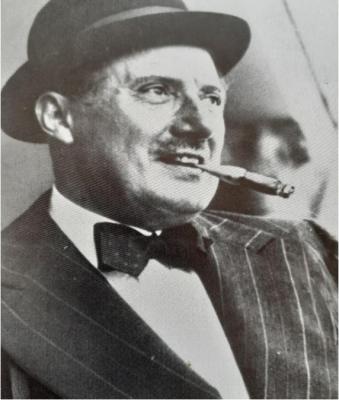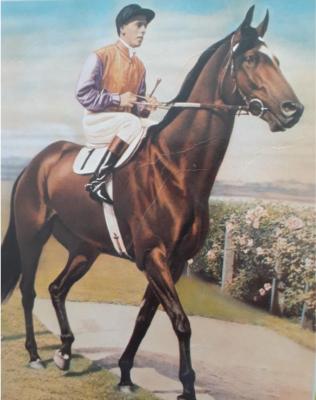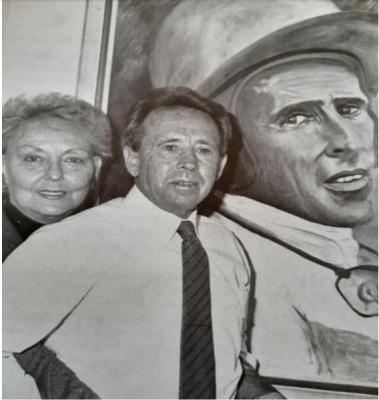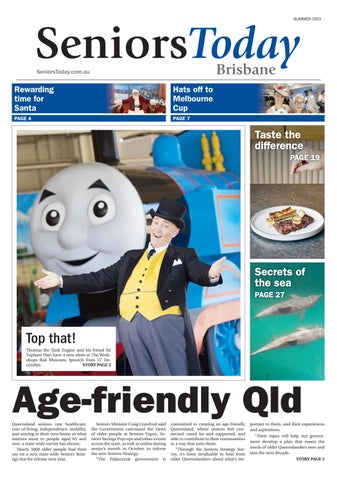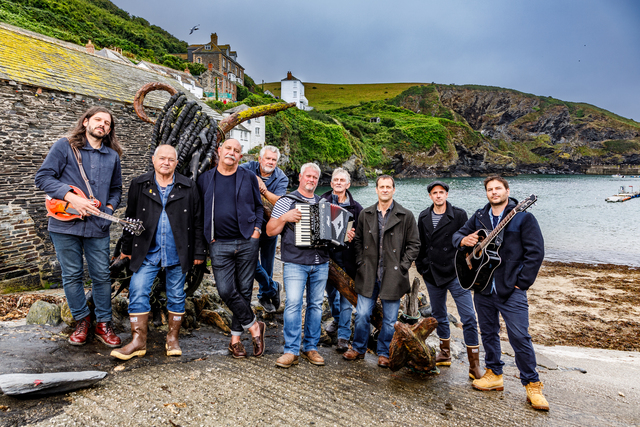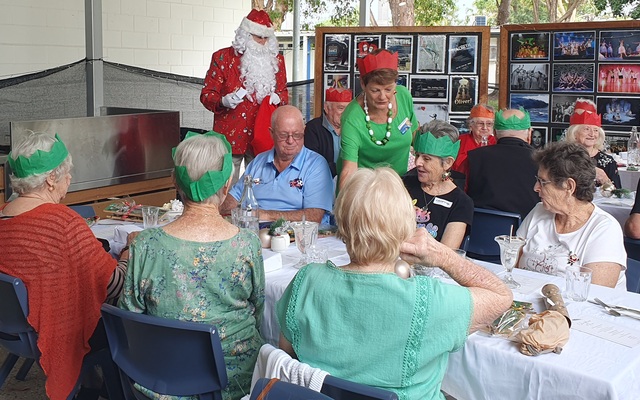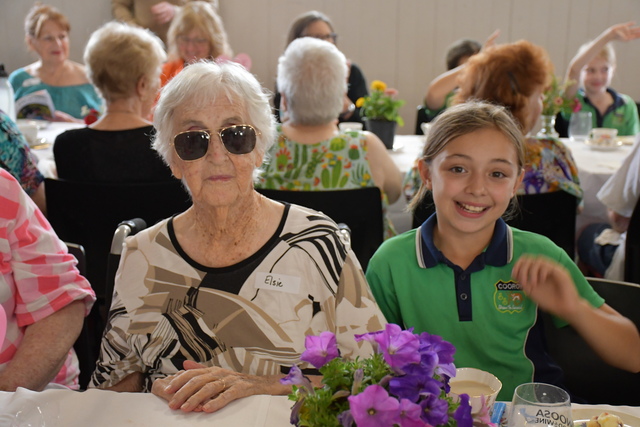Racing enthusiast and former newspaper editor Keith Kratzmann reflects on the career of turf legend Bernborough after a Christmas gift brought up some old memories.
Undoubtedly the greatest weight carrying racehorse of all time amassing 15 successive victories in just one year was the Queensland galloper Bernborough.
The tragic circumstance was that in his 19th start in 1946, the constant weight plus three serious checks in the Caulfield Cup ultimately led to his breaking his front fetlock never to race again where the plan was to take the superstar to gallop against the best gallopers in the United States.
The legendary book on Bernborough, which was difficult to obtain, came into the hands of my daughter Maree Kratzmann who saw second hand books of both Bernborough and Don Bradman (the greatest cricket legend) in a second hand SVDP shop in Gladstone.
The Christmas present was a real delight as one had the opportunity to not only in 1946 as a 12 year-old boy to have my Dad take me to see the great Bernborough while in December of the same year, my older late brother Arthur surprised me by travelling to Brisbane from the Kingaroy rail station to attend the Australian-England test where Bradman was still batting past his century followed by the longest cricket six hit over the grandstand (a record that still stands) by Keith Miller.
Bernborough’s performances which were not in the days of television screens had racing followers tuned into radio broadcasts and if you visited the movies, Bernborough was often on movie theatre screens with the Cinesound News right throughout the nation.
The book “The Story Behind The Legend” was compiled and written by Bill Sigley in conjunction with regular jockey Athol George Mulley.
The total contents comprised 242 pages which was printed at the time by Boolorong Publications when the company was based at Bowen Hills (Brisbane).
There were no tote facilities in this era so all transactions were made with bookmakers on the respective tracks plus other operators with no licence were considered illegal.
“I was fortunate enough at 12 years-old with my late father to catch a tram in the Brisbane suburb of Toowong which travelled to the gates of the Doomben racetrack.
“The cheapest area was to cross the racecourse (known as The Flat) which with my late Dad, cost us only one shilling.
“Before the race was run, Bernborough paraded down the straight and many said he could not win because of having to lump 10st 3lb over just a sprint course.
“When the field reached the home turn, Bernborough was second last and then as he commenced his run, the outstanding commentator in the late Keith Noud said “He’s coming like a tornado” and duly had the race won at the 50 metre mark”.
The following week, trainer Harry Plant accepted with Bernborough from his sprint win to the Doomben Cup where over the 11 furlong course he carried 10st 10lb to victory.
The Mighty Bernborough and Athol George Mulley with his tremendous weight on the way to the start of the 1946 Doomben Ahern Memorial where his sensational winning finish from second last at the turn has never been beaten. Bernborough’s achievements in just some nine months along the eastern seaboard are honoured at Eagle Farm with a museum of his outstanding record.
Apart from his Doomben victories, Bernborough in earlier Victorian starts of 1946 achieved what was regarded as the impossible in taking out the six furlong (1200 metres) Newmarket where over the final 200 metre sprint he clocked a magic 10 seconds, a record which still stands to this day.
The champion is the only galloper to ever start in a Newmarket at 4/9 on while as it was the largest spring race of all time, the race attracted a crowd of 45,000.
One of the turf’s most colourful figures was Azzalin Romano who paid 2,600 guineas for the great champion. The threesome of Romano, trainer Harry Plant and Benborough got what was called a bargain price well ahead of a prospective owner who came late for at the auction where he was supposed to have an offer of over 4,000 guineas.
After his sensational Doomben wins and weight carrying records Bernborough was then transported by freight ship across bumpy waves from Brisbane to Sydney to contest the feature races before his departure to Melbourne for the weight for age events and the anticipated Caulfield-Melbourne Cup double.
Following his Sydney success, Bernborough was then earmarked for the 1946 Caulfield Cup where he was asked at the time to carry a mammoth weight over a mile and a half (or 12 furlongs).
At this time, rumours were also floating that Bernborough would later travel by ship to North America.
In the Caulfield Cup and apart from giving away up to three stone by some runners, he suffered three checks in running which kept him at the rear of the field until he had to pull wide in the straight and finish fifth.
Mulley denied any suggestions that he had of not winning the race, but what occurred was three checks in the race which seemed a target by other jockeys in creating the Queenslander with a troublesome run.
It’s interesting to note that two bookmakers were betting 3/1 each way about Bernborough while other prices were basically just 6/4. During the same meeting, Bernborough was quoted at 6/4 to win the forthcoming Melbourne Cup even with his massive weight over the gruelling two miles.
However, connections of the stable decided to take Mulley away from his long standing record where they secured Billy Briscoe as the new rider in the forthcoming weight for age Mackinnon Stakes where weight was only 9st 3lb. Coming to the turn, Briscoe gave the champion a feeler and he was ready for a withering run.
Judging the time to be right, he gave Bernborough rein on the turn, and the race favourite closed quickly on Flight, and the mare’s owner Brian Crowley was thinking, ‘It’s second again for us’.
Then, a loud noise, like a sharp clap of thunder, or a gunshot, rolled over Flemington. Bernborough faltered and veered off course towards the middle of the track.
The noise was so loud that Briscoe thought for a second that Bernborough had been shot, and Jack O’Sullivan on Flight later told Bill Ahern ‘I heard a sharp crack behind me just before we entered the straight’. The noise had been heard three furlongs away in the sand, and in the press box Bill Ahern and ‘Cardigan’ thought for a moment that some ‘crank’ had shot the champion.
Bernborough’s near foreleg crumbled beneath him and only Briscoe’s skill stopped him from falling. The intelligent bay tried to save himself. He spread his hindlegs, and skidded to a halt, leaving the course, people still believing that he was taken away to be destroyed. A stunned silence, then cries of horror…. Bernborough standing on three legs, his injured near foreleg held high off the ground.
As Bernborough left the course, people still believed that he was to be destroyed. However veterinarians were able to place the sesamoid bone in position and re-bandage the fore leg. This later resulted in Bernborough travelling by ship to the United States for stud duties.
He was then taken by train to Lexington in Kentucky, the home breeding capital of America.
By 1975, Bernborough’s 13 crops of 267 foals had produced 245 race starters of which 189 had won 1334 races.
Bernborough has never been forgotten by race followers like yours truly and those still in the age group of the 80’s and 90’s of his rise to fame via the early years of his association with the Darling Downs.
A statue of Bernborough is seen by thousands of racing folk and tourists where it graces the entry to the headquarters of the Jondaryan Shire Council at Oakey.
The greatest five gallopers of all time in the hearts of former racing identities in their respective era are Phar Lap, Bernborough, Carbine, Peter Pan, Tulloch and Kingston Town.
Information from “The Story Behind The Legend” by Bill Sigley in conjunction with Athol George Mulley.

